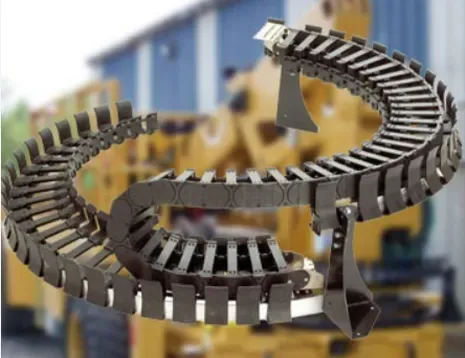cable drag chain
Understanding Cable Drag Chains Enhancing Efficiency in Industrial Machinery
In the modern industrial landscape, efficiency and organization are paramount. One of the essential components that contribute to these goals is the cable drag chain, also known as a cable carrier or energy chain. These devices are pivotal in ensuring that cables, hoses, and other flexible lines are precisely managed within a dynamic environment such as manufacturing plants, robotics, and CNC machines.
What is a Cable Drag Chain?
A cable drag chain is a solution designed to guide and protect flexible cables and hoses. It consists of a series of interconnected links that can articulate, allowing them to bend and twist as needed. These chains can route multiple cables simultaneously, minimizing the risk of tangling, abrasion, and wear. They are constructed from various materials including plastic, steel, and aluminum, depending on the specific application requirements.
Importance of Cable Drag Chains
The primary purpose of a cable drag chain is to ensure smooth movement and accessibility of cables and hoses in areas where equipment moves regularly. This is crucial in environments like CNC machining centers, robotic arms, and conveyor systems, where cables must remain unobstructed while allowing the machinery to operate seamlessly.
1. Protection Cable drag chains serve to protect wiring and hoses from physical damage. Without a drag chain, cables can be exposed to hazards such as friction, chemicals, and even environmental elements like water and dust. The drag chain encapsulates these components, shielding them from potential harm.
2. Organization In industrial settings, cables easily become tangled if left unmanaged. Drag chains keep cables organized, reducing clutter and making maintenance more straightforward. This organization ultimately leads to more efficient operations and minimizes the time spent troubleshooting electrical issues.
3. Flexibility and Movement Equipment today often requires a high degree of flexibility. Cable drag chains are designed to be lightweight yet durable, allowing for complex movements and rotations without hindrance. They can accommodate various movements such as linear, circular, or even three-dimensional motions, making them invaluable for robotic applications.
cable drag chain

4. Longevity By protecting cables and hoses, cable drag chains can significantly extend the life of these components. This durability translates into cost savings over time, as companies can avoid premature cable replacements and reduce downtime caused by cable malfunctions or damages.
Applications of Cable Drag Chains
Cable drag chains can be found in a wide range of applications across various industries. In automation and robotics, they are commonly used to manage the wiring that powers robots, ensuring that cables remain in place as the robots perform complex tasks. In the automotive industry, cable drag chains manage wiring in machines and conveyers, promoting safety and efficiency in the assembly line.
Moreover, in construction and heavy machinery, these chains are used to maintain hydraulic hoses and electrical cables in excavators, cranes, and other equipment. The public transportation sector utilizes cable drag chains in trains and subways to organize and protect various electronic and communication lines. The versatility of cable drag chains makes them applicable in virtually any environment where movement occurs.
Installation and Maintenance Considerations
Installing a cable drag chain requires careful planning to ensure that the chains will accommodate the expected movements of the machinery. It is crucial to consider factors such as the length of travel, the weight of the hoses or cables being carried, and the environmental conditions they will face.
Regular maintenance is also essential for optimal performance. Periodic inspections can help identify any wear or damage to the drag chains themselves, as well as the cables and hoses they protect. Proper lubrication of moving parts and cleaning to remove debris can further enhance the service life of both the chain and its contents.
Conclusion
In summary, cable drag chains are an indispensable component in the modern industrial framework. They enhance efficiency, protect critical components, and promote organization in complex systems. As technology continues to advance, integrating better and more versatile cable drag chains into industrial machinery will be vital for businesses aiming for optimized operations and increased productivity. With their myriad benefits, investing in high-quality cable drag chains is a step towards a more efficient and streamlined manufacturing and operational environment.








